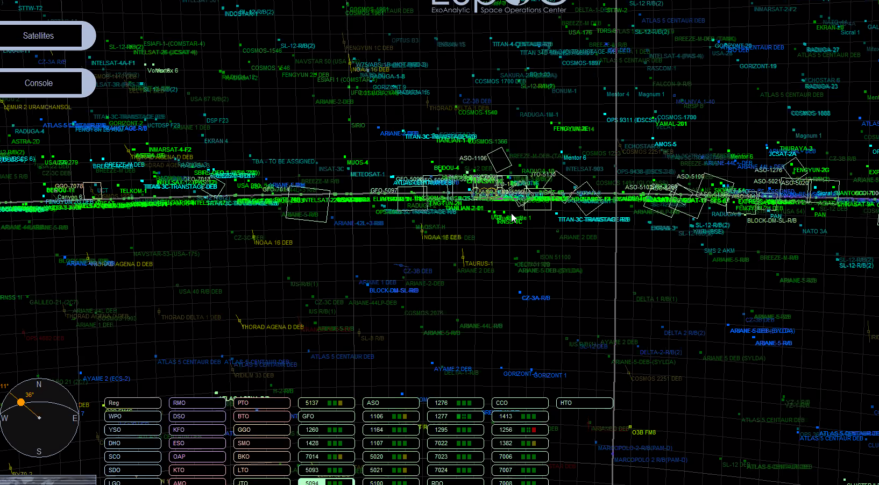
Companies in the space domain awareness market are eager to work with the Space Force but need a clearer picture of future demand
WASHINGTON — The head of U.S. Space Systems Command Lt. Gen. Michael Guetlein has directed the command’s procurement offices to “buy what we can and only build what we must.”
One area of interest is space domain awareness, or SDA. The Space Force wants to supplement its own intelligence with data from commercial companies to help satellite operators identify potential threats in orbit.
F Schnell, senior materiel leader for space domain awareness at Space Systems Command, said in an interview Oct. 1 that many companies in the SDA market are eager to work with the Space Force but need a clearer picture of future demand.
“They have to tell their investors what they’re investing against,” Schnell told SpaceNews. “We need to tell them what we see coming down the pipeline.”
Companies in this sector of the industry operate ground and space-based sensors that track objects in all orbits, and use artificial intelligence algorithms to analyze the data.
During a keynote speech last week at the Advanced Maui Optical and Space Surveillance Technologies (AMOS) conference in Hawaii, Guetlein said SSC spent about $134 million on commercial space domain awareness products over the past two years.
But the command has yet to map out a forecast for future years so it can “advertise that number to the investors,” Schnell said.
During the AMOS event, Schnell and other SSC officials held one-on-one meetings with dozens of private companies.
“Everybody we met had questions about what does that market look like?” he said. “We need to scope that out.”
Col. Marc Brock, commander of Space Delta 2, the Space Force unit responsible for SDA, said there are today technical and cultural hurdles that prevent widespread use of commercial data.
“We need to integrate and exploit nontraditional commercial data,” Brock said at the AMOS conference. “But there has been a push against this to a certain extent within our own enterprise, and I’ve been pushing back on that.”
“We need our commercial partners,” he said. “We need the data that you have and we need to figure out how to use that data.”
The commercial data that the Space Force uses today is uploaded to a repository known as the Unified Data Library. But the communications systems that Space Delta 2 uses to move that data are very slow, he said. The unit also needs tools to validate the accuracy and consistency of the data.
Schnell said SSC is helping Space Delta 2 address some of these issues. “The use of commercial data is still relatively new,” he said. “How do we give operators confidence that commercial data is as good as that from our exquisite sensors?”
Analytics tools needed
Guetlein in his speech at AMOS cited recent comments by Gen. Glen VanHerck, commander of the North American Aerospace Defense Command, who said most of the domain awareness data available today is “left on the cutting room floor” and not even analyzed.
That’s because data collected by military sensors for the most part is classified, managed in stovepipes and not shared, VanHerck said during a panel discussion Sept. 21 at the Air, Space & Cyber conference.
To solve this problem, Guetlein said “we have to free the data.”
Over the years, he said, “we have put so many constraints on the data, so many rules on what you can look at, what you can’t look at.”
With regard to Brock’s issues with data transmissions, Guetlein agreed that “we need better comm pipes. We are still traveling over the old copper lines that were built back in the 60s. We’ve got to get past that.”
“And I’ve got to lower the classification level,” he said. “All we’re doing is hiding from ourselves. We’ve got to start having the critical conversations and open up the dialogue.”
The acquisition model Guetlein is pushing, to “exploit what we have, buy what we can, and build only what we must requires a culture change,” he said.
“Our operators have to know they can count on the commercial data,” he added. “In places like Ukraine, the data will flow. So we’re working on a culture change.”
Note: This article have been indexed to our site. We do not claim legitimacy, ownership or copyright of any of the content above. To see the article at original source Click Here













![We Asked a NASA Scientist: Are Wildfires Getting Worse? [Video] thumbnail](https://scitechdaily.com/images/Camp-Fire-Wildfire-scaled.jpg)